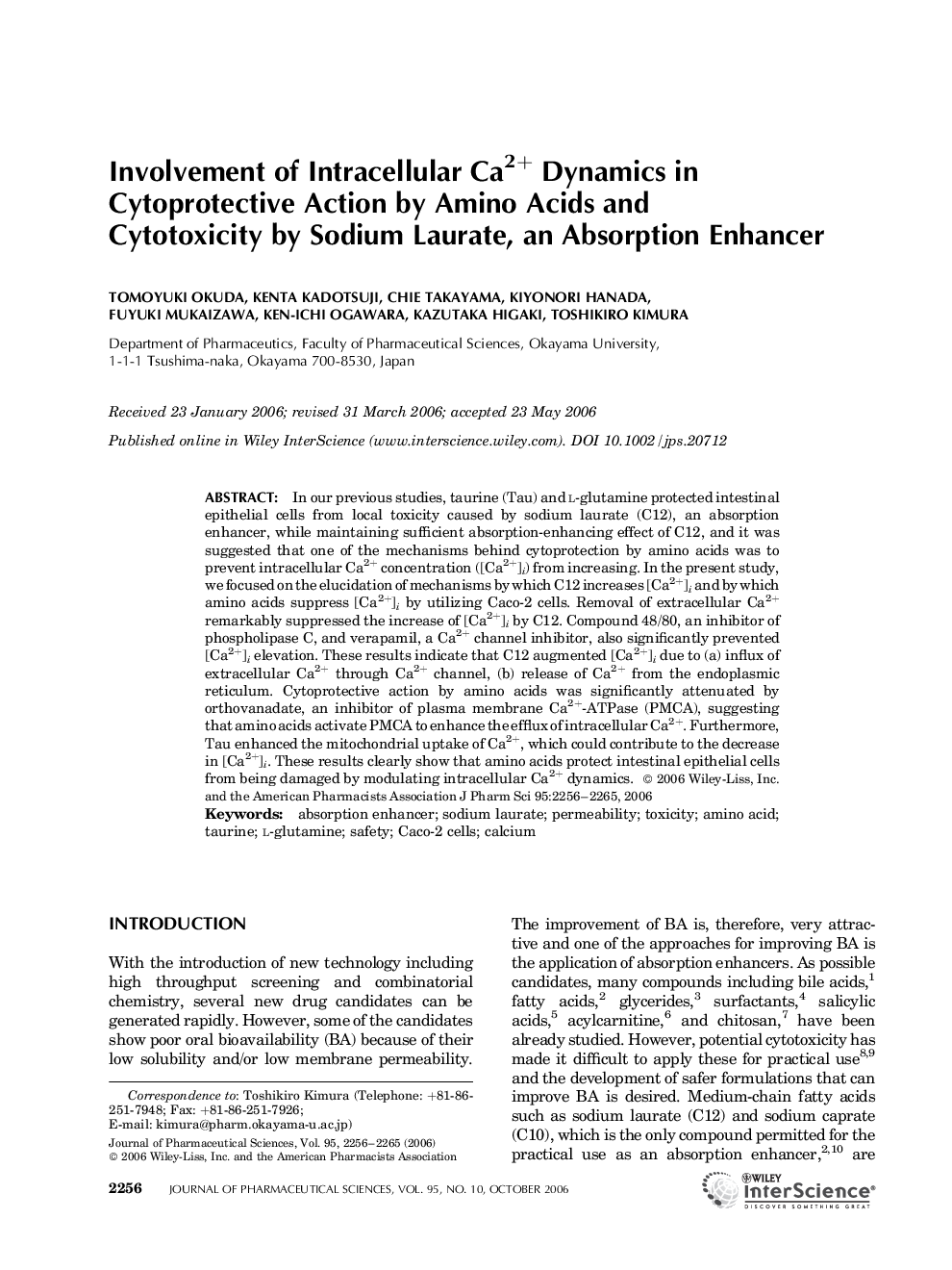| Article ID | Journal | Published Year | Pages | File Type |
|---|---|---|---|---|
| 2487964 | Journal of Pharmaceutical Sciences | 2006 | 10 Pages |
Abstract
In our previous studies, taurine (Tau) and Lâglutamine protected intestinal epithelial cells from local toxicity caused by sodium laurate (C12), an absorption enhancer, while maintaining sufficient absorptionâenhancing effect of C12, and it was suggested that one of the mechanisms behind cytoprotection by amino acids was to prevent intracellular Ca2+ concentration ([Ca2+]i) from increasing. In the present study, we focused on the elucidation of mechanisms by which C12 increases [Ca2+]i and by which amino acids suppress [Ca2+]i by utilizing Cacoâ2 cells. Removal of extracellular Ca2+ remarkably suppressed the increase of [Ca2+]i by C12. Compound 48/80, an inhibitor of phospholipase C, and verapamil, a Ca2+ channel inhibitor, also significantly prevented [Ca2+]i elevation. These results indicate that C12 augmented [Ca2+]i due to (a) influx of extracellular Ca2+ through Ca2+ channel, (b) release of Ca2+ from the endoplasmic reticulum. Cytoprotective action by amino acids was significantly attenuated by orthovanadate, an inhibitor of plasma membrane Ca2+âATPase (PMCA), suggesting that amino acids activate PMCA to enhance the efflux of intracellular Ca2+. Furthermore, Tau enhanced the mitochondrial uptake of Ca2+, which could contribute to the decrease in [Ca2+]i. These results clearly show that amino acids protect intestinal epithelial cells from being damaged by modulating intracellular Ca2+ dynamics.
Keywords
Related Topics
Health Sciences
Pharmacology, Toxicology and Pharmaceutical Science
Drug Discovery
Authors
Tomoyuki Okuda, Kenta Kadotsuji, Chie Takayama, Kiyonori Hanada, Fuyuki Mukaizawa, Kenâichi Ogawara, Kazutaka Higaki, Toshikiro Kimura,
